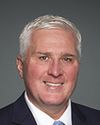I will repeat my question.
I started by saying that there was public health on the one hand and privacy on the other. You had to balance these two aspects. What were the criteria that led to the choices that were made and how many were there?
Evidence of meeting #4 for Access to Information, Privacy and Ethics in the 44th Parliament, 1st Session. (The original version is on Parliament’s site, as are the minutes.) The winning word was information.
A video is available from Parliament.
5:20 p.m.
Bloc

René Villemure Bloc Trois-Rivières, QC
I will repeat my question.
I started by saying that there was public health on the one hand and privacy on the other. You had to balance these two aspects. What were the criteria that led to the choices that were made and how many were there?
5:20 p.m.
Acting Vice-President, Public Health Agency of Canada
I think I understand.
Mr. Chair, the law in the Privacy Act for the Government of Canada is very clear. Part of what we did, as we were engaging with the Office of the Privacy Commissioner and as our own privacy experts were looking at what we were doing with mobility data and what we wanted to do with the new RFP, was first to look to see if there were any privacy impacts or if any personal information was being held or used. These experts and the external ethics board that guides PHAC came to the conclusion that no personal or private information was part of the mobility data we were looking at.
I don't have a specific list of criteria for Mr. Villemure. I'd say in any specific case we'd be going through, part of the work is to make sure we're doing it ethically and we're protecting and looking after Canadians.
5:25 p.m.
Conservative

The Chair Conservative Pat Kelly
With that, we're just a little over time, in keeping with the generosity of the last two.
We'll go, then, to Mr. Green. We'll have Mr. Green for three minutes, and we may have enough time for a couple of questions from what would be the final round with Mr. Brassard and Ms. Hepfner.
Go ahead, Mr. Green.
5:25 p.m.
NDP

Matthew Green NDP Hamilton Centre, ON
I appreciate your generosity.
Dr. Tam referenced that we are in the beginning of the collection of big data. I would like to know, through you, Mr. Chair, from Dr. Tam, for 2022 what would be her thoughts on the ways in which big data will be used within the Public Health Agency of Canada. Are there other aspects of big data collection of open data that she'll be exploring in her department to make best use of evidence-based decision-making?
5:25 p.m.
Chief Public Health Officer, Public Health Agency of Canada
Public health has really not taken the best advantage of available big data, so this is one of the key ones being utilized at this point. There are other big data sets that could be examined, and the application of algorithms and artificial intelligence. However, it's quite sad but true that public health hasn't really made the best use of that.
Internationally, I believe flight patterns and that type of information is going to be used and is being used, and other countries are using it to look at the spread of infectious disease. However, there are other applications in terms of healthy living and climate change and other big data sets that we could probably take more advantage of.
5:25 p.m.
NDP

Matthew Green NDP Hamilton Centre, ON
Does it reason, then, given the newness of this kind of emerging technology, that perhaps it might be the case that our existing privacy legislation hasn't quite caught up to the technology?
When you were taking briefings from the ethics panel, what were some of the cautions that would have been provided to the health agency to ensure that lines weren't crossed, that ethical breaches didn't happen?
5:25 p.m.
Chief Public Health Officer, Public Health Agency of Canada
Mr. Chair, as Mr. Allison has outlined, certainly the Public Health Ethics Consultative Group would have been presented with the fact in front of them, which is that we are using de-identified and aggregated data so that privacy is not an issue.
There is a need going forward, as we have in this case, to state our public health goals and why we need this information to help our public health response, so that's really important. In terms of transparency, we have this data posted and explained on the COVIDTrends website and—
5:25 p.m.
NDP

Matthew Green NDP Hamilton Centre, ON
I'm sorry. That's pre-existing information.
I have one last question.
5:25 p.m.
NDP

Matthew Green NDP Hamilton Centre, ON
Through you to Mr. Allison, prior to taking this position, have you ever been involved in a department within the government that has collected this amount of data on such a mass scale?
5:25 p.m.
Conservative

The Chair Conservative Pat Kelly
With that, we're really getting up against our stop time. We have time for maybe two minutes each.
We'll go to Mr. Brassard, followed by Ms. Hepfner.
5:25 p.m.
Conservative

John Brassard Conservative Barrie—Innisfil, ON
Through you, Mr. Chair, to Dr. Tam, are you familiar with the FluWatchers program that exists within the Public Health Agency of Canada?
5:25 p.m.
Chief Public Health Officer, Public Health Agency of Canada
I'm not directly involved, but yes, of course I know it exists. It's a tool for monitoring influenza, and I think it's run by volunteers.
5:25 p.m.
Conservative

John Brassard Conservative Barrie—Innisfil, ON
Right. On the website, it says:
FluWatchers are Canadian volunteers who normally track influenza, but with the global pandemic, they're also tracking COVID-19.
It goes on to say that individuals “can help public health officials identify where influenza and COVID-19 may be circulating” by answering just two quick questions each week, which, the site says, takes only about 15 seconds.
I guess really what I want to point at here is that we have this website that's endorsed by the Public Health Agency of Canada. It's an opt-in program. People opt in with their consent.
Why would we not be promoting this website as a means to determine a public health response, the effectiveness, and where these patterns are developing, as opposed to running a risk, as is clearly identified and, I think, will be identified by security and privacy experts when they come here, including the Privacy Commissioner? Why would we not endorse this website and promote it instead of collecting the data, the mobility data, without consent?
5:30 p.m.
Chief Public Health Officer, Public Health Agency of Canada
Mr. Chair, these are two entirely different kinds of data. One is volunteers saying, “Oh, I have flu-like symptoms.” Mobility data gives you the ability to look at spread and the dispersion of a virus and some other infectious disease.
They are complementary, but they are not the same kinds of information.
5:30 p.m.
Conservative

John Brassard Conservative Barrie—Innisfil, ON
Dr. Tam, if I go further into this website, there are maps that indicate where the spread of influenza and COVID-19 are.
5:30 p.m.
Chief Public Health Officer, Public Health Agency of Canada
Mr. Chair, yes, you can say, “I have flu and I'm at this spot,” but you can't tell the trajectory and the movement that led to the potential spread of that virus. They are complementary information and support each other if you were laying on the epidemiologic data.
5:30 p.m.
Conservative

The Chair Conservative Pat Kelly
Thank you.
With that, we'll let Ms. Hepfner have the final questions for two minutes.
5:30 p.m.
Liberal

Lisa Hepfner Liberal Hamilton Mountain, ON
I'm hoping Mr. Allison can help me with this question.
Although I know we don't have any cellphone experts on this panel, I know, from covering a lot of criminal trials, that cellphone data is often used these days to help solve crimes, because it's data that is happening.
When we hear from a member how many phones have to be pinged, it's a bit misleading. It's not like the government's going out trying to ping phones. Every time you pick up your phone, [Technical difficulty—Editor] around you. The companies that run the cellphone towers have that data. The police can ask, through the courts, to get access to that data to find out where a suspect was at any one time, but it's not like we're going out looking to collect data. This is data that's being collected all the time.
5:30 p.m.
Acting Vice-President, Public Health Agency of Canada
That's an accurate representation. Cellphone and telco companies collect this data as part of the business and part of the services they provide to users. That is not any part of the data or information that is coming to PHAC.
5:30 p.m.
Liberal

Lisa Hepfner Liberal Hamilton Mountain, ON
I take Mr. Green's point that maybe we need to look at whether consumers really know that they're consenting to this information's being shared. Maybe we do need to look at the privacy laws, but it's not like we're going out looking for data that's not already available. This is data that's available. People opt in to or can opt out of having their data shared.
5:30 p.m.
Acting Vice-President, Public Health Agency of Canada
Mr. Chair, that is correct. As several members of this committee have pointed to, this is a new space for many folks. There are rapid changes happening. Apple made changes in April 2021 to be a more privacy-respecting platform. My expectation is that these changes will continue.
I look forward to seeing the results of this committee's report.
5:30 p.m.
Conservative

The Chair Conservative Pat Kelly
All right, and with that, we are out of time for Ms. Hepfner and out of time for the committee.
The committee is adjourned.